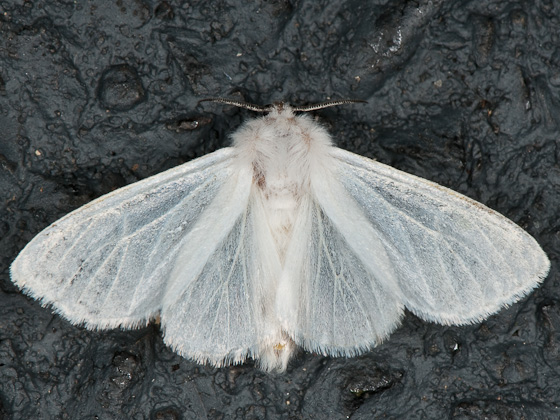Classification
Scientific Name- Hyphantria cunea
Common Name- Fall Webworm
Domain- Eukara
Kingdom- Animalia
Phylum- Arthropoda
Class- Insects
Order- Lepidoptera
Family- Arctiidue
Genus- Hyphantria
Species- Hyphantria cunea
Fall webworms are categorized in the Domain Eukarya because eukaryotic cells (cells with a nucleus) are the
most prevalent cells in the organisms. They are classified in
Kingdom Animalia because they are a heterotroph (feeds on other
organisms) have muscle tissues, nervous tissues, and a skeletal
structure that supports their bodies. They also are composed
primarily of eukaryotic animal cells. Fall webworms are
classified in Phylum Arthropoda because they have a segmented
exoskeleton made of the carbohydrate chitin. They are
categorized in Class Insecta because they have six appendages
that protrude from the thorax. Fall webworms are also
categorized in Order Lepidoptera because the larvae of the
species undergo full metamorphosis to reach adulthood
(Lepidoptera 2010). They are
also classified in this order because the larvae have a pair of
mandibles for feeding. The mandibles are later lost in the adult
form and have a proboscis called the maxillae that allows
feeding. The adult forms also have 2 pairs of wings made of a
thin membrane. They have also been classified in Family Arctiidae (A.K.A. Tiger Moths) because the larvae form has setae
that allows for movement. The adult form has tympanal organs
that allow for sensitive hearing capabilities. It is classified
in Genus Hyphantria because the larvae are webworms, which are
able to produce webbing to either build a protective structure,
or for repelling down high places.